
10 maggio 2023
di Francesco Ramella
Slower is safer. In 1973, Pierre Messmer, the then French prime minister imposed a 120 km/h speed limit on motorways. The decision was motivated by the desire to save fuel after the oil crisis and to improve safety. In 1974, Georges Pompidou raised the limit to 140 km/h, but a few weeks later prime minister Chirac brought it to 130 km/h. The fatality rate initially went down, then a little bit up and then down again, at less than half the starting value (Figure 1).
Figure 1
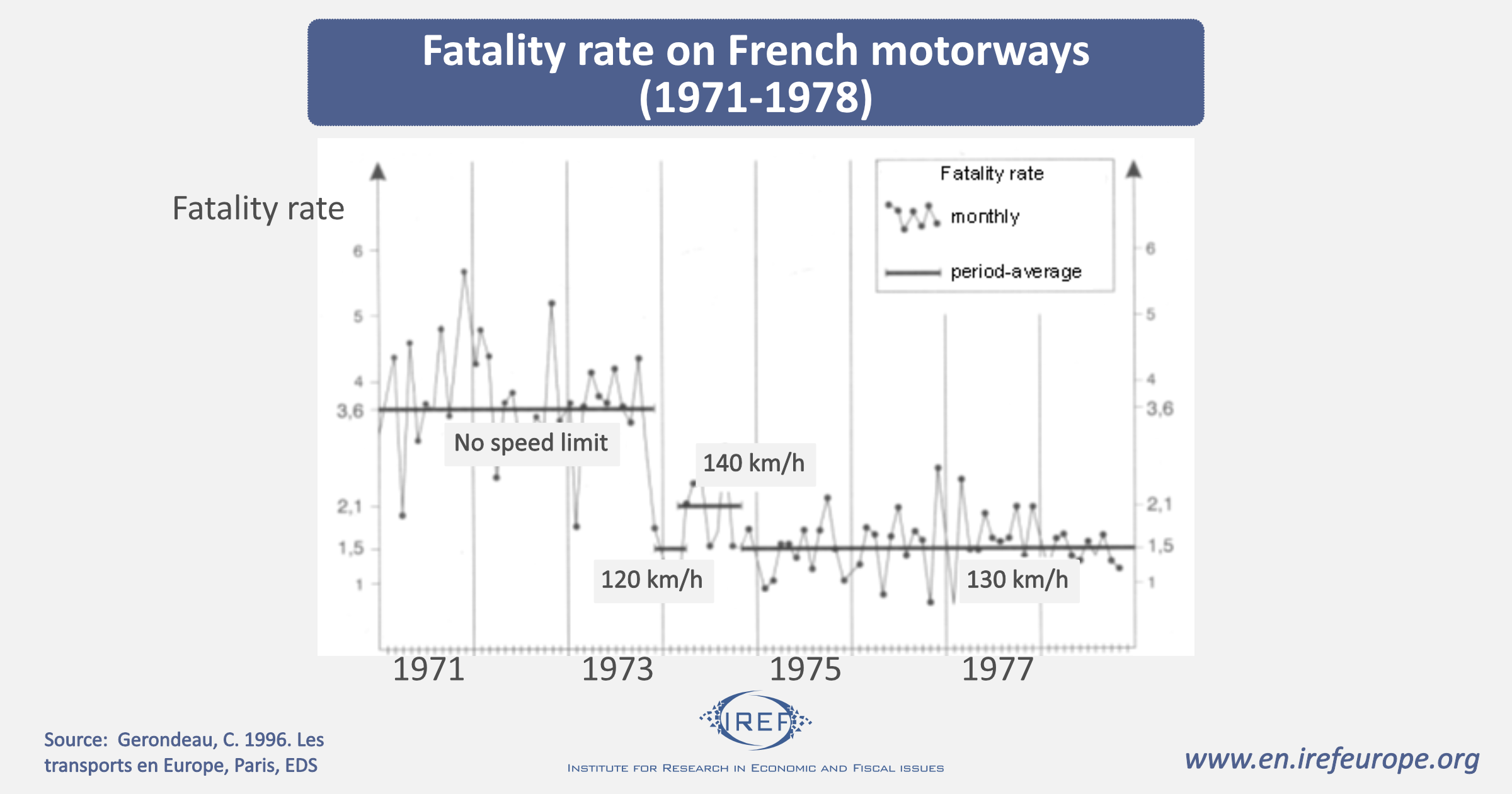
Since 2004, Italy has been resorting to the “Tutor”, a system that allows to detect the average speed of vehicles. In the first 12 months of operation, peak speed decreased by 25%, average speed by 15% and the fatality rate by 51%. In December 2002 a 130 km/h limit was introduced on a 62 km section of the Autobahn 24 between Berlin and Hamburg. The number of casualties decreased by 57%.
So, speed matters. But vehicles and infrastructures matter too. Today, Germany is the only main country without a general speed limit on highways. Yet, in 2020 the fatality rate on its motorways was 95% lower than in 1970 (Figure 2), 60% lower than in Italy. Similar figures apply to France. Both Italy and France are characterised by 130 km/h speed limit (Figure 3).
Figure 2
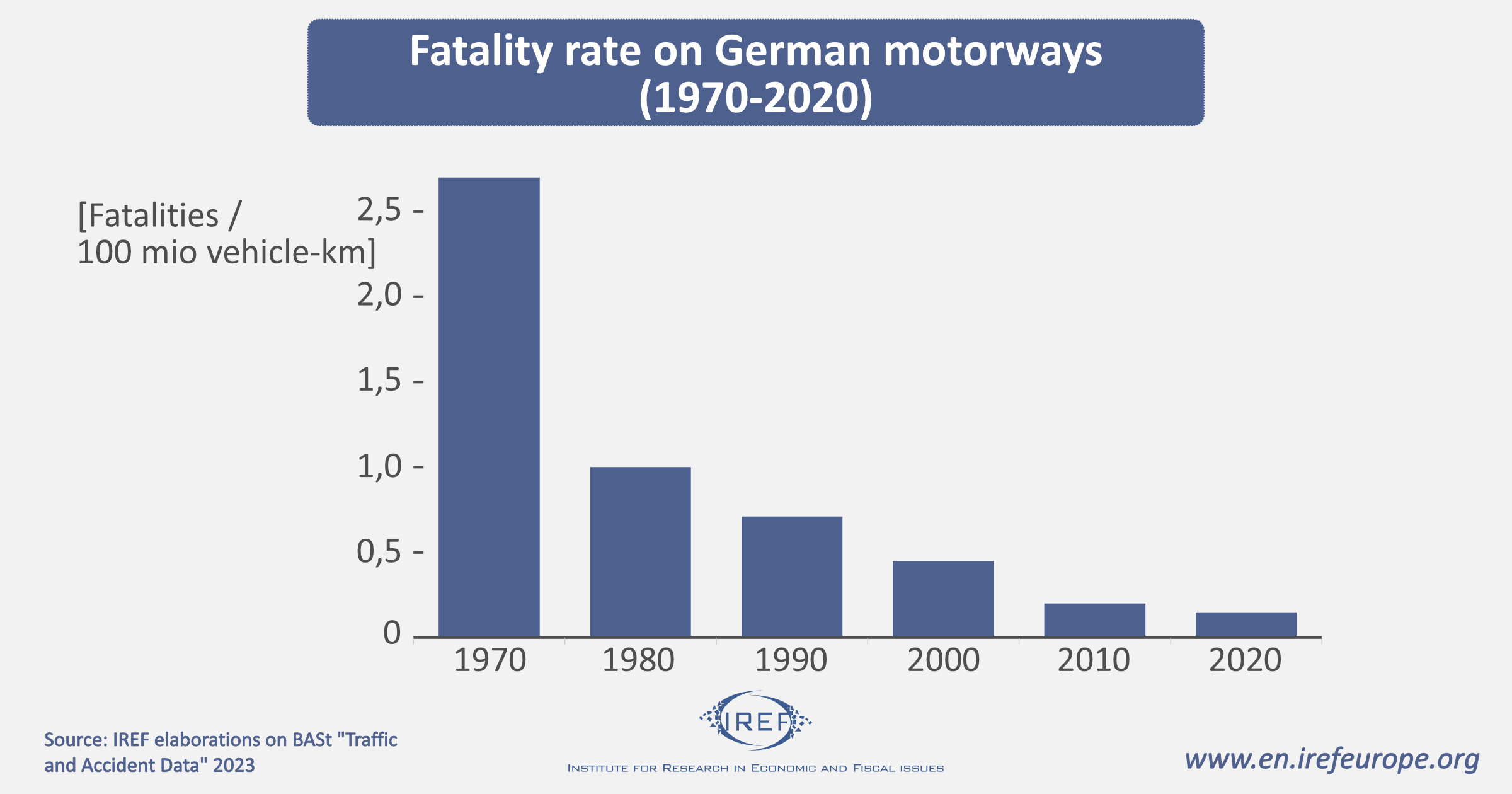
Figure 3
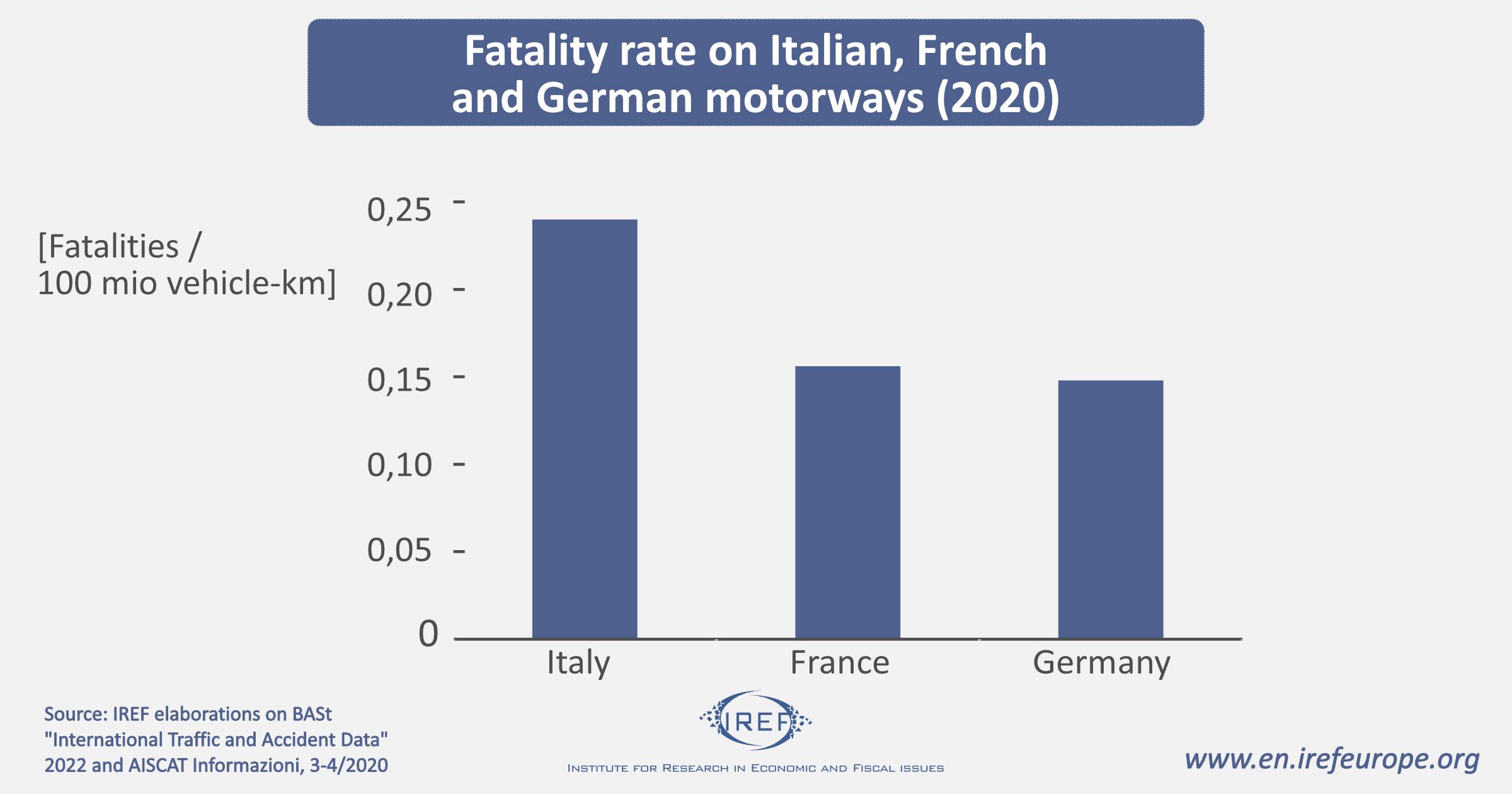
The debate on speed limits has gained strength again in the last few years. The issue is no more oil scarcity but, ironically, its abundance and the related CO2 emissions. The relation between fuel consumption and emissions versus average speed is U-shaped with a minimum at around 80 km/h. In a sentence, lower maximum and average speeds lead to lower emissions.
However, this is not an efficient policy in Europe. In fact, the fuel excise tax is equivalent to a carbon tax of about 250 € per ton of CO2 (total average tax pressure on motor vehicles amounts to about 800 €), a value higher than most estimates of the actual damage. Moreover, according to an analysis carried out by Goldman Sachs, the cost of cutting about half of the world’s emissions is lower than 50€/t (Figure 4).
Indeed, for every ton of CO2 “saved” by lowering fuel consumption, European treasuries lose revenues with which they could purchase a CO2 reduction that is five times larger.
Figure 4
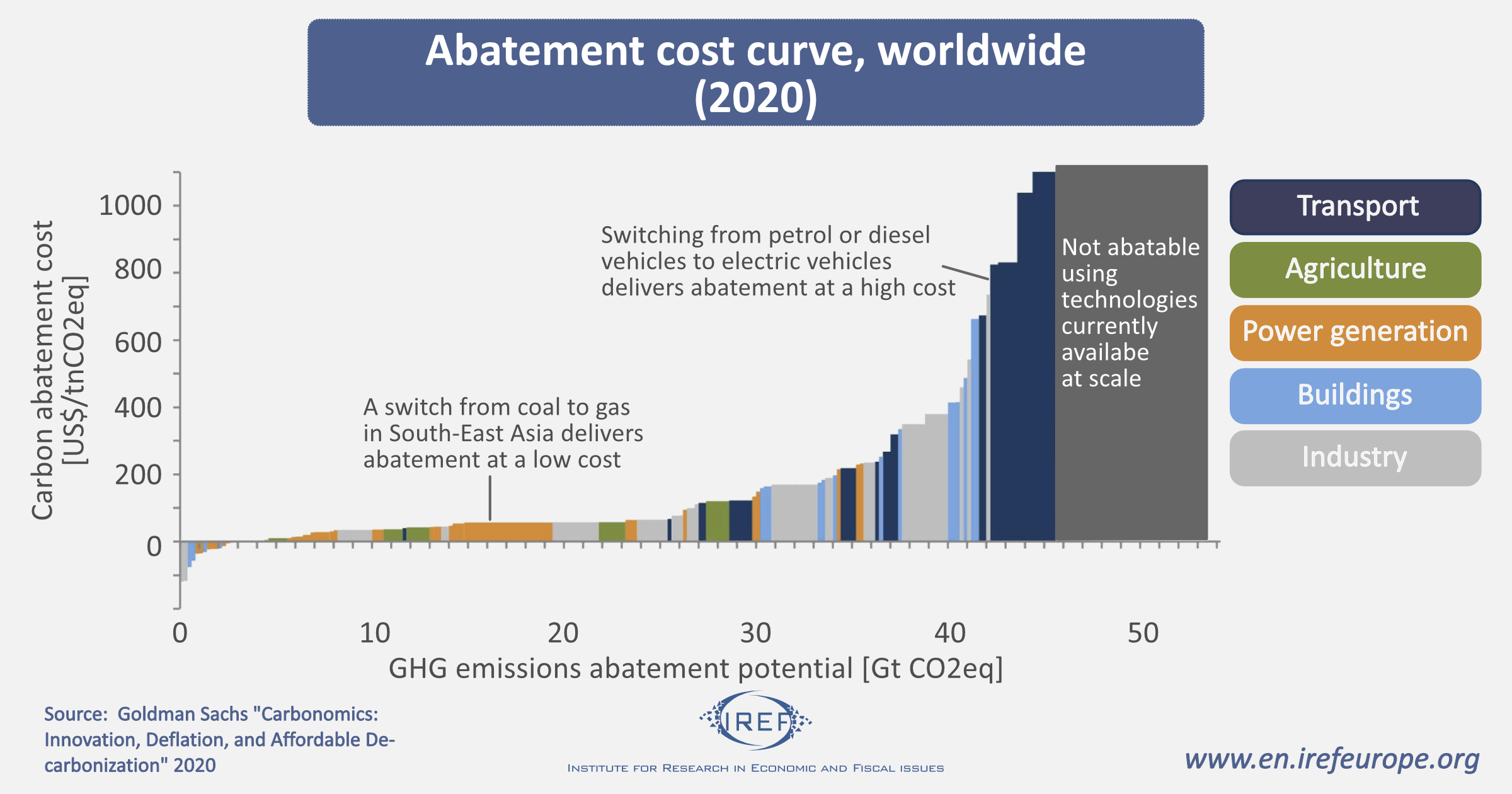
So far, we have seen the dark side of higher speed. But there is also obviously a bright one: speed saves time. In fact, one should consider both the costs and benefits of speed limits.
An analysis has just been published in Ecological Economics refers to Germany and examines the costs and benefits of a 130 km/h speed limit in Germany. The balance is positive: benefits outweigh costs by about 1 billion euro per year. Yet, the results and the methodology adopted is questionable:
- The private net benefits of not having a speed limit are tiny, just thirty-two million higher (or 3% of) than fuels expenses and crash costs. However, drivers have costs (depreciation, maintenance, insurance) other than fuel. Considering these last items, private costs would be higher than private benefits and this does not make much sense.
- The value of fuel savings are overestimated, since taxes account for more than half of the price.
- The benefit of each ton of CO2 saved is assumed equal to its estimated damage, which is 195€. But the true avoided cost (and thus the benefit) should be equal to that of the least expensive abatement system (about 50 €).
- The authors write that: “according to UBA [the German Environmental Authority], 1.5 million tCO2 [1% of road transport emission in Germany] would have been avoided by a 130 kph speed limit. If average emissions are 175 g CO2/vehicle-km, this is equivalent to 8,55 billion vehicle-km”. This is not a real decrease of traffic: CO2 emissions are avoided mainly because of lower fuel consumption, but they estimate two main benefits (576 million in total), those related to the supply chain (infrastructure and energy) and to traffic infrastructure, as if it were so. As for investments in new infrastructures and maintenance, it should be added that: a) the introduction of a speed limit cannot save money already spent for building motorways (bygones are bygones); marginal and not average costs of maintenance should be considered. The marginal cost is estimated by the EU equal to 0.002 € per vehicle-km instead of the assumed 0.029.
- The loss of surplus for those who will travel less because of the speed limit has not been considered.
Figure 5
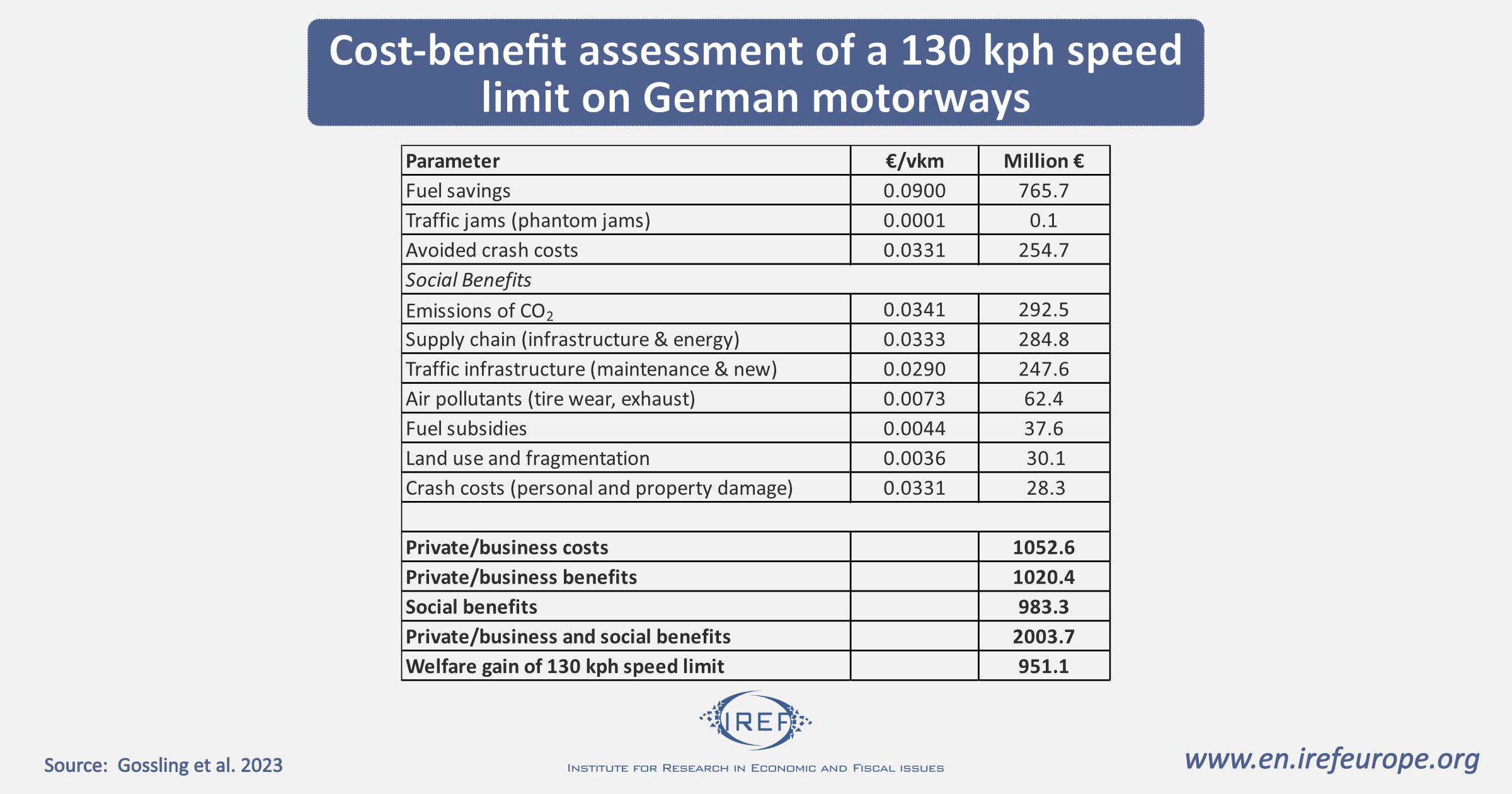
Finally, the analysis doesn’t consider the fact that in the future cars’ CO2 emission will decrease as those of the other pollutants (NOx emissions are expected to decline by 80% in 2040), and that vehicles will be safer.
In short, there is reason to believe that the introduction of speed limits is a cost for a society.
